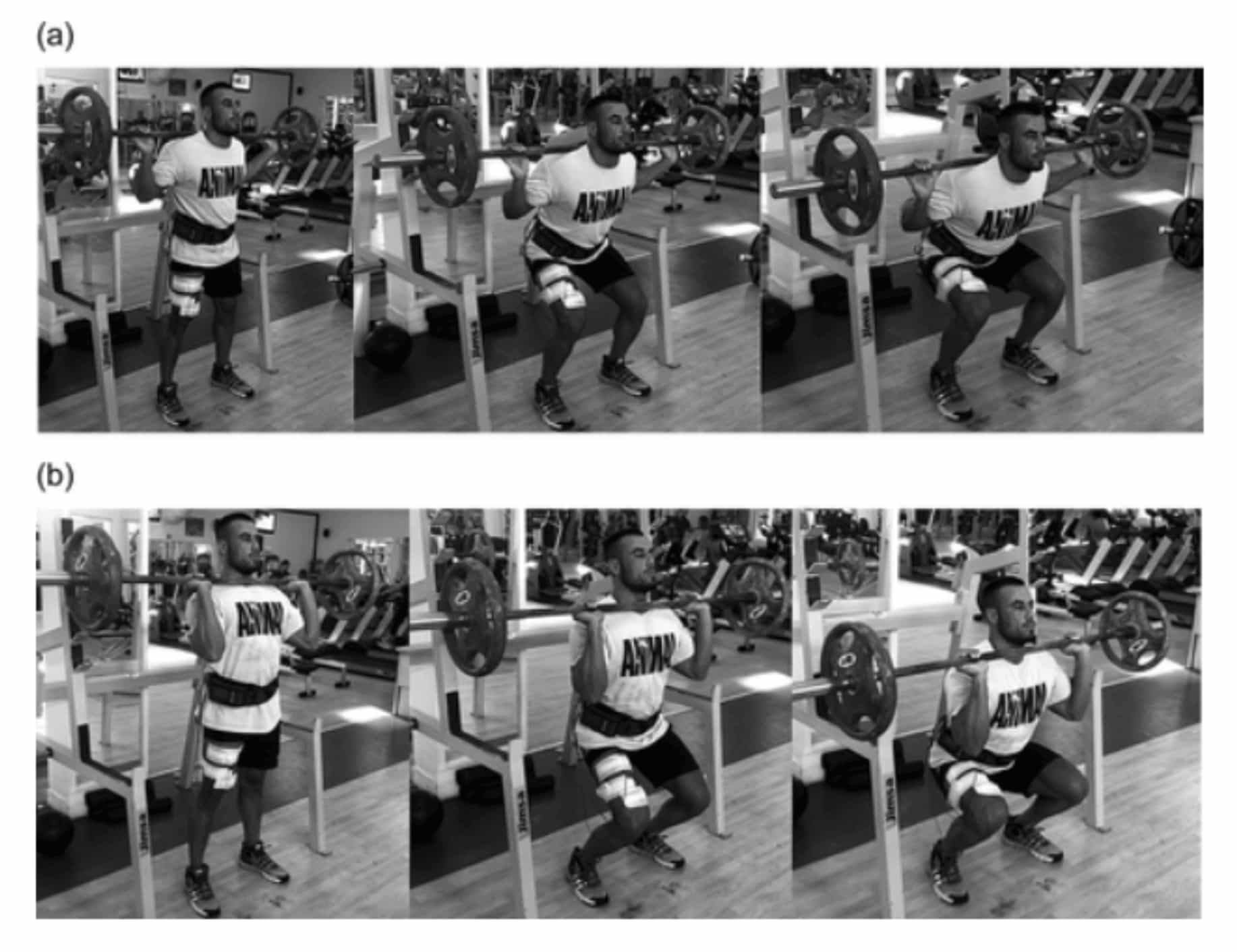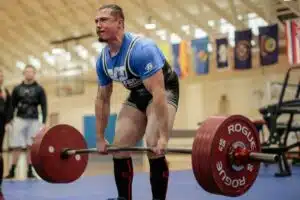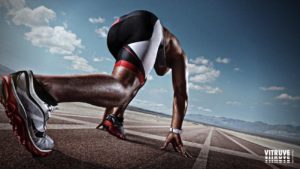The front squat is one of the most repeated exercises in gyms and boxing. CrossFit has made this type of exercise trendy and many people every day place the bar above the clavicle, bend their elbows and place their fingers under the bar.
What benefits can this exercise bring?
Is it safe to do for beginner athletes? And advanced athletes? The front squat has certain biomechanical differences from the back squat. The position of the spine, the flexion of the hip, the dorsiflexion of the ankle is different. In this week’s blog article the aim is to be able to offer enough information so that coaches and athletes know what the benefits and advantages of this exercise are and what the limitations are. In the same way, we will analyze if the performance of this type of exercise offers more than a back squat or any other movement focused on improving strength in the lower body.
In this week’s article we are going to focus on the best options for improving strength and therefore endurance in leg training. Strength training has positioned itself at the top of the training pyramid in recent years and its application has a directly proportional relationship with the improvement of sports performance. There is sufficient evidence to confirm that strength training has the key characteristics for exercise programs to be safe, effective, and efficient (1). It has already been shown in a healthy but non-athletic population that the improvements from strength training are dose-dependent, that is, depending on the amount of volume and intensity at which the training is done, the improvements will be one or the other. The American College of Sports Medicine (ACSM), one of the greatest eminences regarding exercise and health recommendations, establishes which are the best indications for improving strength for novice and experienced people (2). However, Peterson et al. (2004) (1) wanted to show that a similar situation also occurs in athletes. To do this, they carried out a systematic review and meta-analysis with more than 37 studies and concluded that athletes who trained at an intensity of 85% of their maximum repetition (hereinafter RM) 2 days a week and with a mean of 8 sessions per muscle group obtained the greatest improvements from the outside. In addition, several studies have confirmed that those athletes who perform strength training in addition to resistance training obtain better sports results (3-5). You can mesure all this trainings with a vbt device.
But what about specific leg training? How is the squat strength related to improving athletic performance?
The lower body is the anatomical part that has the greatest function in any type of sport, from volleyball to football and even in hockey or paddle tennis. The strength of the lower body allows it to have a greater range of motion, a better force and speed of reaction and of course a better energy efficiency. In addition, there is evidence that an improvement in the strength of the lower body has a transfer in the performance of different sports disciplines such as sprinting, jumping or throwing (6, 7). For the development of the lower body we find different training methods, exercises and methodologies. For example, an exercise for improving quadriceps strength is the knee extension, leg press, or squat. Even within the squat we have different types of squat: back squat, a front squat, squat with safety bar or Smith machine squat, among others. There are different studies that have compared the front squat versus the back squat. The first one we would like to mention is the study by Gullet et al. (2009) in which they defined which muscles are involved in both exercises and where certain differences between the front squat and the back squat can be seen (8). As can be seen in figure number 1, even with the naked eye, we can see how the ankle flexion, the trunk flexion and the position of the arms are very different between both types of squat.
Fig. 1 Hasan Ulas Y, Deniz E, Arif Mithat A, Serdar A. Kinematic and EMG activities during front and back squat variations in maximum loads [Internet]. 2015
Once the biomechanical differences of movement are known, it is time to analyze whether there really is a greater participation of one muscle group or another. In this regard, Yavuz et al. (2015) compared by means of surface electromyography which muscles had the greatest impact in both the front squat and the back squat (9). To do this, they placed the electromyograph in such a way as to measure the activity of the vastus lateralis, vastus medialis, rectus femoris, semitendinosus, biceps femoris, gluteus maximus, and erector spinae. The results of this study show that there are differences between the muscles that participate in both exercises. Thus, for example, it was found that there is greater activation of the vastus medialis during the front squat and greater activation of the semitendinosus during the back squat. In addition, the front squat seems to have a lower trunk inclination so there is less risk of injury, especially in the lower back.
On the other hand, the study by Spitz et al. (10) analyzed the differences between the load and the speed of movement of the bar performing both types of squat and showed that there are no significant differences between both types of squat. This means that when performing a front squat and a back squat the relationship between the load being moved and the speed at which it is moving is similar. As we already know, there is a direct and inversely proportional relationship between the speed of execution and the weight to be lifted. The higher the weight, the lower the speed and the lower the weight, the higher the speed.
The front squat seems to also come out favored when compared to the back squat and the parallel squat. The study by Contreras et al. (2016) (11) positions the front squat as a good alternative to the back squat for women with good hip and ankle mobility. It should be noted that in order to perform a front squat with good technique, it is necessary to make a certain progression and gain mobility in the lower trunk. Also, as we defined at the beginning of this blog article, lower body strength is key in certain sports due to its transfer to horizontal movement power. This same group analyzed the relationship between the hip-thrust (hip dominant), the front squat, and sports performance in young adolescents. To do this, they divided a group that performed a lower body workout focusing on the hip-thrust and another focusing on the front squat. Variables such as vertical and horizontal jump, sprint, 3 RM test of front squat and hip-thrust, and isometric strength of the lower body were measured. The results of the study confirm that after the front squat training the vertical jump and front squat marks are improved while after the hip-thrust training the sprint marks and isometric strength of the lower body are improved. That is why the combination of both types of exercise can offer the athlete enough improvements to improve her marks in all aspects (12).
Lastly, Munger et al. (2017) (13) analyzed the effects of the eccentric phase during the front squat on the concentric phase and the performance of the squat. They found that a modulation of the eccentric load during the front squat can favor a better peak force during the concentric phase, a better execution speed and, therefore, better sports performance. That is why the front squat can be considered a good tool to improve the performance of the lower ten.
Conclusion
We can affirm that the front squat is presented as a good alternative for lower body work, offering great benefits to athletes. However, the volume and intensity at which this exercise is performed may offer larger or smaller improvements depending on the context. Also, this exercise with bad execution can cause injury or damage. That is why we strongly recommend following a progression with a professional in order to get the most out of such a complete exercise. If you have any questions, don’t hesitate to ask! Leave a comment or contact us here.
Referencias
- Peterson MD, Rhea MR, Alvar BA. Maximizing strength development in athletes: a meta-analysis to determine the dose-response relationship. The Journal of Strength & Conditioning Research. 2004;18(2):377-82.
- Medicine ACoS. American College of Sports Medicine position stand. Progression models in resistance training for healthy adults. Medicine and science in sports and exercise. 2009;41(3):687-708.
- Barnes KR, Hopkins WG, Mcguigan MR, Northuis ME, Kilding AE. Effects of resistance training on running economy and cross-country performance. 2013.
- Beattie K, Kenny IC, Lyons M, Carson BP. The effect of strength training on performance in endurance athletes. Sports Medicine. 2014;44(6):845-65.
- Ramírez-Campillo R, Álvarez C, Henríquez-Olguín C, Baez EB, Martínez C, Andrade DC, et al. Effects of plyometric training on endurance and explosive strength performance in competitive middle-and long-distance runners. The Journal of Strength & Conditioning Research. 2014;28(1):97-104.
- Balshaw TG, Hunter AM. Evaluation of electromyography normalisation methods for the back squat. Journal of Electromyography and Kinesiology. 2012;22(2):308-19.
- Channell BT, Barfield J. Effect of Olympic and traditional resistance training on vertical jump improvement in high school boys. The Journal of Strength & Conditioning Research. 2008;22(5):1522-7.
- Gullett JC, Tillman MD, Gutierrez GM, Chow JW. A biomechanical comparison of back and front squats in healthy trained individuals. The Journal of Strength & Conditioning Research. 2009;23(1):284-92.
- Yavuz HU, Erdağ D, Amca AM, Aritan S. Kinematic and EMG activities during front and back squat variations in maximum loads. Journal of sports sciences. 2015;33(10):1058-66.
- Spitz RW, Gonzalez AM, Ghigiarelli JJ, Sell KM, Mangine GT. Load-Velocity relationships of the back vs. front squat exercises in resistance-trained men. The Journal of Strength & Conditioning Research. 2019;33(2):301-6.
- Contreras B, Vigotsky AD, Schoenfeld BJ, Beardsley C, Cronin J. A comparison of gluteus maximus, biceps femoris, and vastus lateralis electromyography amplitude in the parallel, full, and front squat variations in resistance-trained females. Journal of applied biomechanics. 2016;32(1):16-22.
- Contreras B, Vigotsky AD, Schoenfeld BJ, Beardsley C, McMaster DT, Reyneke JH, et al. Effects of a six-week hip thrust vs. front squat resistance training program on performance in adolescent males: a randomized controlled trial. Journal of strength and conditioning research. 2017;31(4):999-1008.
- Munger CN, Archer DC, Leyva WD, Wong MA, Coburn JW, Costa PB, et al. Acute effects of eccentric overload on concentric front squat performance. The Journal of Strength & Conditioning Research. 2017;31(5):1192-7.












